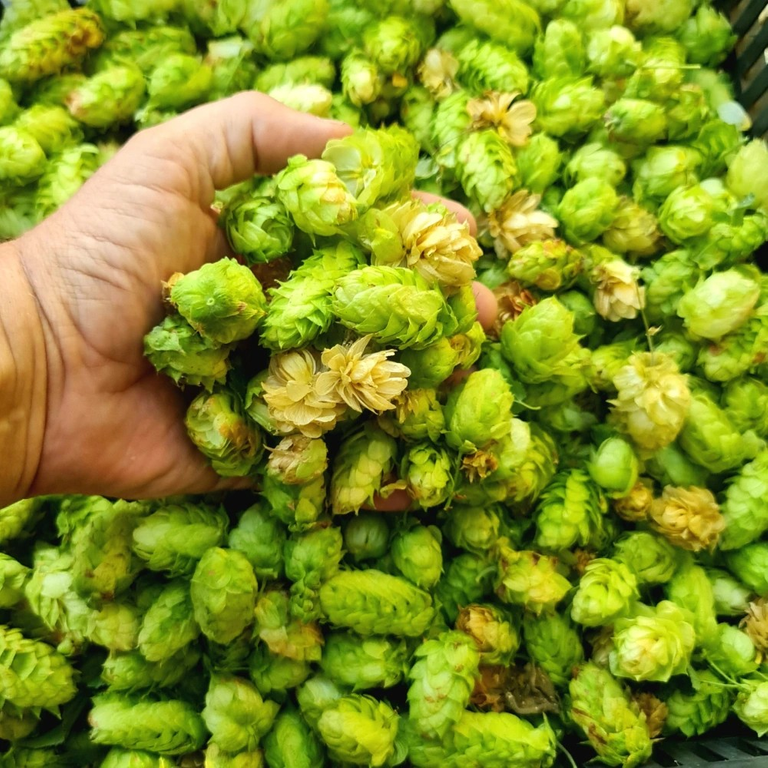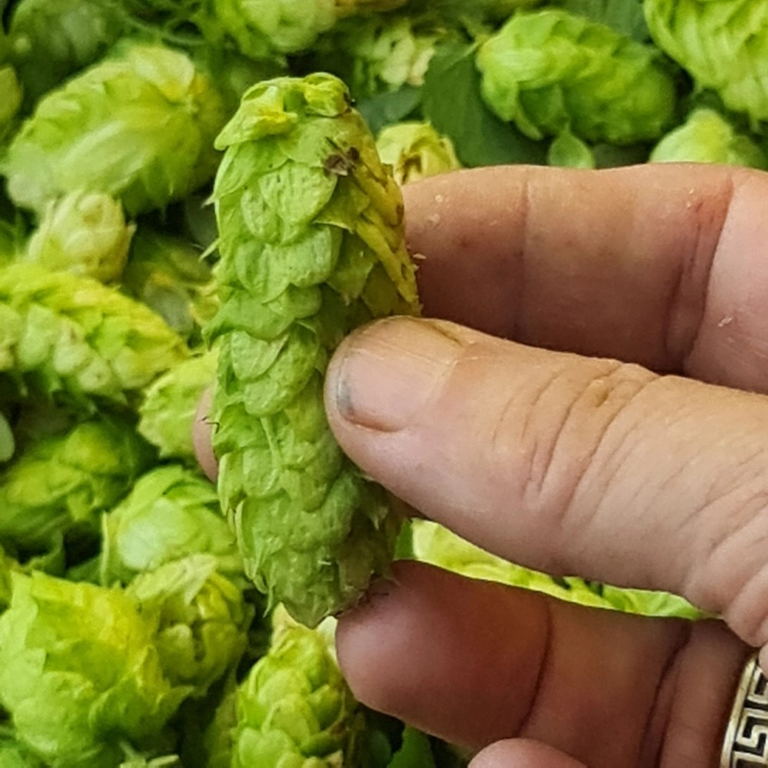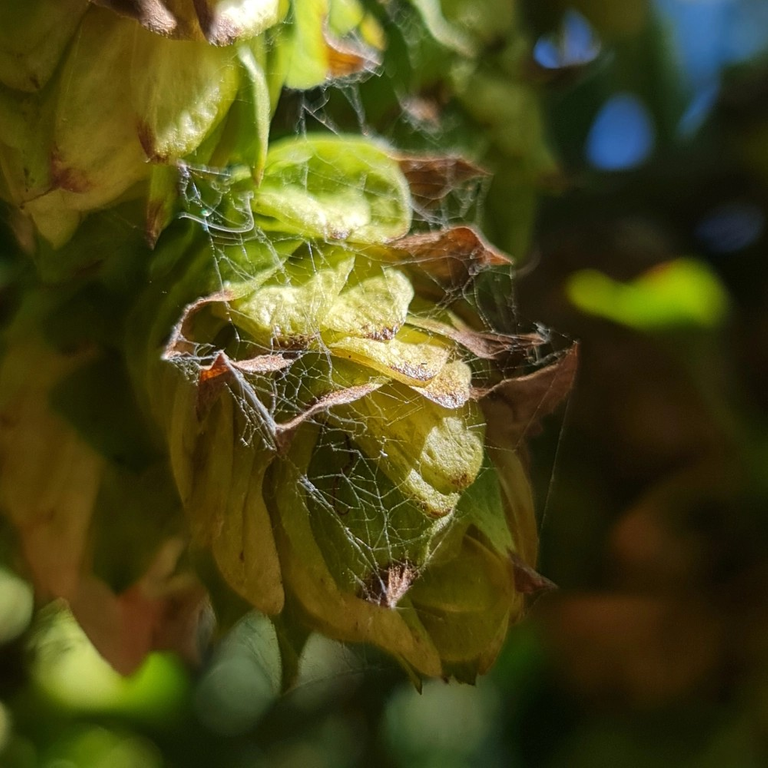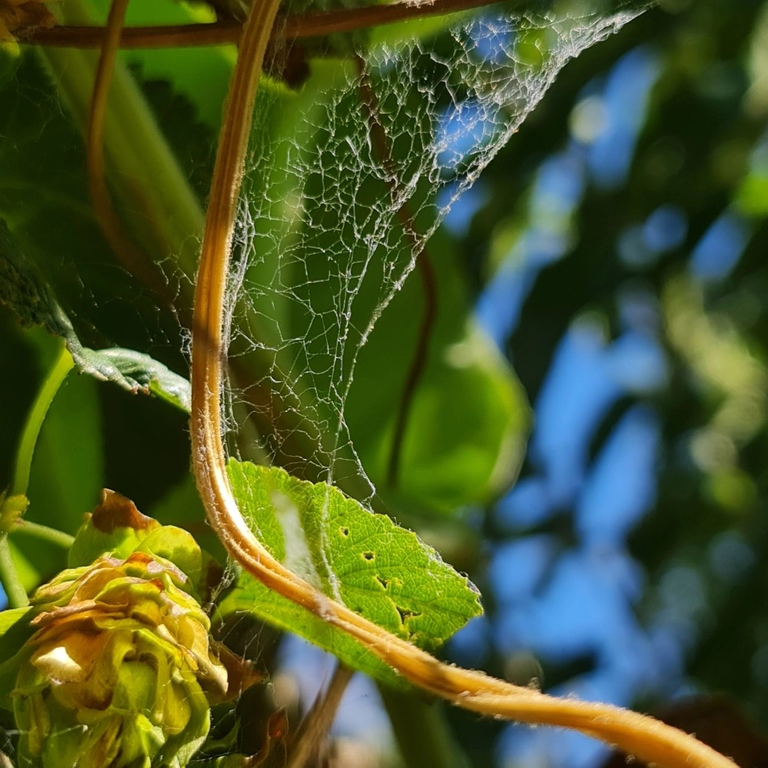Harvesting Hops and spiders
Hops (Humulus lupus) are one of our most useful plants at Ligaya Garden. They are a deciduous bine (yes, bine, it has to do with how they cling to things) that shade the front verandah area in Summer and die back to make mulch and allow sunlight through in winter. Our variety, Pearl is one of the eariest varieties to be brought over by German settlers waaaay back.

Hops (is there a singular form?) is one of our most popular plants. So many people ask for rhizome cuttings. And why not? It is a vary fast growing, highly productive plant.
They also have amazing herbal medicinal properties – we use them for their sleep inducing effect as well as blend them in a special pain killing mix that I make up for people who have long term sleep issues due to chronic pain. They also make a slightly bitter but very soothing tea.
The medicinal properties of Hops are described in much more detail on our page here.
One thing that makes Hops harvesting a little difficult isn’t to do with any nasty spines or thorns but with the ecosystem that grows around them. We only harvest for the use of family and friends, so don't need all of the cones.

Hops attract Whitefly early in the season but they don’t affect the plant very much, I rarely see Bees around the flowers but they get pollinated well every year. That suggests that they are pollinated by other things.
The thing that I’m always fascinated by is the large number of tiny, tiny spiders that I think are of the Orb Weaver Family Araneidae. It’s just an assumption – we have many individuals of that Family throughout the garden and some are very, very tiny.

These spiders make their homes in and around the cones, making it an interesting exercise to work out what gets past them to pollinate the flowers or whether the flowers are pollinated earlier in the season before the spiders set up house?
There is definitely a lot of pollen in the flowers and their closed shape seems to preclude pollination by wind. As spiders are a major predator of tiny insects, it remains to be seen what the answer is.
Spiders do a lot of good in the garden. They reduce the pest population enormously and can be found in every stratum of the garden. I find tiny green Orb Weavers way up amongst the Elder flowers and creepy, alien face-hugger looking Woodlouse spiders under pavers and logs where they make their burrows. There is a type spider for every nook and cranny. Saying that though, Ligaya Garden isn’t one creepy Halloween mass of spider’s webs, you’ve got to look quite hard to find some of the better disguised or more discrete species.

So, it is always tricky to harvest the Hops while leaving spiders happily safe. Of course, we can’t rescue all of them individually, there are too many and they are too tiny – so tiny that I’ve not managed to get a successful photo with my phone yet.
Once picking is done, everything gets a good stir and shake in a big seive and then gets left alone outside overnight. I’ve seen small things crawling away at different times, so some critters are being rescued. Also, I generally don’t pick up any cones that have fallen to the ground.
Every year, we seem to have a similar number of spiders and small insects on the Hops, so I think that this cautionary approach is working.
Some of the material in this blog is reposted from my main, reader supported website Ligaya Garden Online but I often post fresh material here and tweak posts so that there is bonus stuff for #hivegarden.






And to think I picked mine yesterday and they went straight in the drying rack. I had to put it in the spare bathroom and everytime I go in there I fall asleep.
Maybe your bathroom is now full of tiny spiders!
https://twitter.com/118886589/status/1643414502694694912
The rewards earned on this comment will go directly to the people( @sacra97 ) sharing the post on Twitter as long as they are registered with @poshtoken. Sign up at https://hiveposh.com.
thanks for sharinig!